Cover
Title Page
Copyright Page
Contents
Preface
ACKNOWLEDGMENTS
Chapter 1 Introduction to Derivatives
1.1 What Is a Derivative?
1.2 An Overview of Financial Markets
Trading of Financial Assets
Measures of Market Size and Activity
Stock and Bond Markets
Derivatives Markets
1.3 The Role of Financial Markets
Financial Markets and the Averages
Risk-Sharing
1.4 The Uses of Derivatives
Uses of Derivatives
Perspectives on Derivatives
Financial Engineering and Security Design
1.5 Buying and Short-Selling Financial Assets
Transaction Costs and the Bid-Ask Spread
Ways to Buy or Sell
Short-Selling
The Lease Rate of an Asset
Risk and Scarcity in Short-Selling
Chapter Summary
Further Reading
Problems
PART ONE: Insurance, Hedging, and Simple Strategies
Chapter 2 An Introduction to Forwards and Options
2.1 Forward Contracts
2.2 Call Options
2.3 Put Options
2.4 Summary of Forward and Option Positions
2.5 Options Are Insurance
2.6 Example: Equity-Linked CDs
Chapter Summary
Further Reading
Problems
2.A: More on Buying a Stock Option
Chapter 3 Insurance, Collars, and Other Strategies
3.1 Basic Insurance Strategies
3.2 Put-Call Parity
3.3 Spreads and Collars
3.4 Speculating on Volatility
Chapter Summary
Further Reading
Problems
Chapter 4 Introduction to Risk Management
4.1 Basic Risk Management: The Producer’s Perspective
4.2 Basic Risk Management: The Buyer’s Perspective
4.3 Why Do Firms Manage Risk?
4.4 Golddiggers Revisited
4.5 Selecting the Hedge Ratio
Chapter Summary
Further Reading
Problems
PART TWO: Forwards, Futures, and Swaps
Chapter 5 Financial Forwards and Futures
5.1 Alternative Ways to Buy a Stock
5.2 Prepaid Forward Contracts on Stock
5.3 Forward Contracts on Stock
5.4 Futures Contracts
5.5 Uses of Index Futures
5.6 Currency Contracts
5.7 Eurodollar Futures
Chapter Summary
Further Reading
Problems
5.A: Taxes and the Forward Rate
5.B: Equating Forwards and Futures
5.C: Forward and Futures Prices
Chapter 6 Commodity Forwards and Futures
6.1 Introduction to Commodity Forwards
6.2 Equilibrium Pricing of Commodity Forwards
6.3 Pricing Commodity Forwards by Arbitrage
6.4 Gold
6.5 Corn
6.6 Energy Markets
6.7 Hedging Strategies
6.8 Synthetic Commodities
Chapter Summary
Further Reading
Problems
Chapter 7 Interest Rate Forwards and Futures
7.1 Bond Basics
7.2 Forward Rate Agreements, Eurodollar Futures, and Hedging
7.3 Duration and Convexity
7.4 Treasury-Bond and Treasury-Note Futures
7.5 Repurchase Agreements
Chapter Summary
Further Reading
Problems
7.A: Interest Rate and Bond Price Conventions
Chapter 8 Swaps
8.1 An Example of a Commodity Swap
8.2 Computing the Swap Rate in General
8.3 Interest Rate Swaps
8.4 Currency Swaps
8.5 Swaptions
8.6 Total Return Swaps
Chapter Summary
Further Reading
Problems
PART THREE: Options
Chapter 9 Parity and Other Option Relationships
9.1 Put-Call Parity
9.2 Generalized Parity and Exchange Options
9.3 Comparing Options with Respect to Style, Maturity, and Strike
Chapter Summary
Further Reading
Problems
9.A: Parity Bounds for American Options
9.B: Algebraic Proofs of Strike-Price Relations
Chapter 10 Binomial Option Pricing: Basic Concepts
10.1 A One-Period Binomial Tree
10.2 Constructing a Binomial Tree
10.3 Two or More Binomial Periods
10.4 Put Options
10.5 American Options
10.6 Options on Other Assets
Chapter Summary
Further Reading
Problems
10.A: Taxes and Option Prices
Chapter 11 Binomial Option Pricing: Selected Topics
11.1 Understanding Early Exercise
11.2 Understanding Risk-Neutral Pricing
11.3 The Binomial Tree and Lognormality
11.4 Stocks Paying Discrete Dividends
Chapter Summary
Further Reading
Problems
11.A: Pricing Options with True Probabilities
11.B: Why Does Risk-Neutral Pricing Work?
Chapter 12 The Black-Scholes Formula
12.1 Introduction to the Black-Scholes Formula
12.2 Applying the Formula to Other Assets
12.3 Option Greeks
12.4 Profit Diagrams Before Maturity
12.5 Implied Volatility
12.6 Perpetual American Options
Chapter Summary
Further Reading
Problems
12.A: The Standard Normal Distribution
12.B: Formulas for Option Greeks
Chapter 13 Market-Making and Delta-Hedging
13.1 What Do Market-Makers Do?
13.2 Market-Maker Risk
13.3 Delta-Hedging
13.4 The Mathematics of Delta-Hedging
13.5 The Black-Scholes Analysis
13.6 Market-Making as Insurance
Chapter Summary
Further Reading
Problems
13.A: Taylor Series Approximations
13.B: Greeks in the Binomial Model
Chapter 14 Exotic Options: I
14.1 Introduction
14.2 Asian Options
14.3 Barrier Options
14.4 Compound Options
14.5 Gap Options
14.6 Exchange Options
Chapter Summary
Further Reading
Problems
14.A: Pricing Formulas for Exotic Options
PART FOUR: Financial Engineering and Applications
Chapter 15 Financial Engineering and Security Design
15.1 The Modigliani-Miller Theorem
15.2 Structured Notes without Options
15.3 Structured Notes with Options
15.4 Strategies Motivated by Tax and Regulatory Considerations
15.5 Engineered Solutions for Golddiggers
Chapter Summary
Further Reading
Problems
Chapter 16 Corporate Applications
16.1 Equity, Debt, and Warrants
16.2 Compensation Options
16.3 The Use of Collars in Acquisitions
Chapter Summary
Further Reading
Problems
16.A: An Alternative Approach to Expensing Option Grants
Chapter 17 Real Options
17.1 Investment and the NPV Rule
17.2 Investment under Uncertainty
17.3 Real Options in Practice
17.4 Commodity Extraction as an Option
17.5 Commodity Extraction with Shutdown and Restart Options
Chapter Summary
Further Reading
Problems
17.A: Calculation of Optimal Time to Drill an Oil Well
17.B: The Solution with Shutting Down and Restarting
PART FIVE: Advanced Pricing Theory and Applications
Chapter 18 The Lognormal Distribution
18.1 The Normal Distribution
18.2 The Lognormal Distribution
18.3 A Lognormal Model of Stock Prices
18.4 Lognormal Probability Calculations
18.5 Estimating the Parameters of a Lognormal Distribution
18.6 How Are Asset Prices Distributed?
Chapter Summary
Further Reading
Problems
18.A: The Expectation of a Lognormal Variable
18.B: Constructing a Normal Probability Plot
Chapter 19 Monte Carlo Valuation
19.1 Computing the Option Price as a Discounted Expected Value
19.2 Computing Random Numbers
19.3 Simulating Lognormal Stock Prices
19.4 Monte Carlo Valuation
19.5 Efficient Monte Carlo Valuation
19.6 Valuation of American Options
19.7 The Poisson Distribution
19.8 Simulating Jumps with the Poisson Distribution
19.9 Simulating Correlated Stock Prices
Chapter Summary
Further Reading
Problems
19.A: Formulas for Geometric Average Options
Chapter 20 Brownian Motion and Itô’s Lemma
20.1 The Black-Scholes Assumption about Stock Prices
20.2 Brownian Motion
20.3 Geometric Brownian Motion
20.4 Itô’s Lemma
20.5 The Sharpe Ratio
20.6 Risk-Neutral Valuation
20.7 Jumps in the Stock Price
Chapter Summary
Further Reading
Problems
20.A: Valuation Using Discounted Cash Flow
Chapter 21 The Black-Scholes-Merton Equation
21.1 Differential Equations and Valuation under Certainty
21.2 The Black-Scholes Equation
21.3 Risk-Neutral Pricing
21.4 Changing the Numeraire
21.5 Option Pricing When the Stock Price Can Jump
Chapter Summary
Further Reading
Problems
21.A: Multivariate Black-Scholes Analysis
21.B: Proof of Proposition 21.1
21.C: Solutions for Prices and Probabilities
Chapter 22 Risk-Neutral and Martingale Pricing
22.1 Risk Aversion and Marginal Utility
22.2 The First-Order Condition for Portfolio Selection
22.3 Change of Measure and Change of Numeraire
22.4 Examples of Numeraire and Measure Change
22.5 Examples of Martingale Pricing
22.6 Example: Long-Maturity Put Options
Chapter Summary
Further Reading
Problems
22.A: The Portfolio Selection Problem
22.B: Girsanov’s Theorem
22.C: Risk-Neutral Pricing and Marginal Utility in the Binomial Model
Chapter 23 Exotic Options: II
23.1 All-or-Nothing Options
23.2 All-or-Nothing Barrier Options
23.3 Barrier Options
23.4 Quantos
23.5 Currency-Linked Options
23.6 Other Multivariate Options
Chapter Summary
Further Reading
Problems
23.A: The Reflection Principle
Chapter 24 Volatility
24.1 Implied Volatility
24.2 Measurement and Behavior of Volatility
24.3 Hedging and Pricing Volatility
24.4 Extending the Black-Scholes Model
Chapter Summary
Further Reading
Problems
Chapter 25 Interest Rate and Bond Derivatives
25.1 An Introduction to Interest Rate Derivatives
25.2 Interest Rate Derivatives and the Black-Scholes-Merton Approach
25.3 Continuous-Time Short-Rate Models
25.4 Short-Rate Models and Interest Rate Trees
25.5 Market Models
Chapter Summary
Further Reading
Problems
25.A: Constructing the BDT Tree
Chapter 26 Value at Risk
26.1 Value at Risk
26.2 Issues with VaR
Chapter Summary
Further Reading
Problems
Chapter 27 Credit Risk
27.1 Default Concepts and Terminology
27.2 The Merton Default Model
27.3 Bond Ratings and Default Experience
27.4 Credit Default Swaps
27.5 Tranched Structures
Chapter Summary
Further Reading
Problems
Appendix A: The Greek Alphabet
Appendix B: Continuous Compounding
B.1 The Language of Interest Rates
B.2 The Logarithmic and Exponential Functions
Appendix C: Jensen’s Inequality
C.1 Example: The Exponential Function
C.2 Example: The Price of a Call
C.3 Proof of Jensen’s Inequality
Appendix D: An Introduction to Visual Basic for Applications
D.1 Calculations without VBA
D.2 How to Learn VBA
D.3 Calculations with VBA
D.4 Storing and Retrieving Variables in a Worksheet
D.5 Using Excel Functions from within VBA
D.6 Checking for Conditions
D.7 Arrays
D.8 Iteration
D.9 Reading and Writing Arrays
D.10 Miscellany
Glossary
A
B
C
D
E
F
G
H
I
J
K
L
M
N
O
P
Q
R
S
T
U
V
W
Y
Z
References
Index
A
B
C
D
E
F
G
H
I
J
K
L
M
N
O
P
Q
R
S
T
U
V
W
X
Y
Z
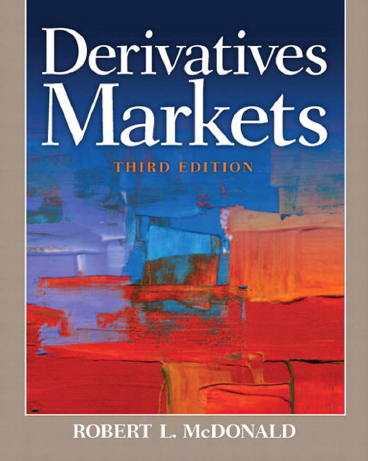

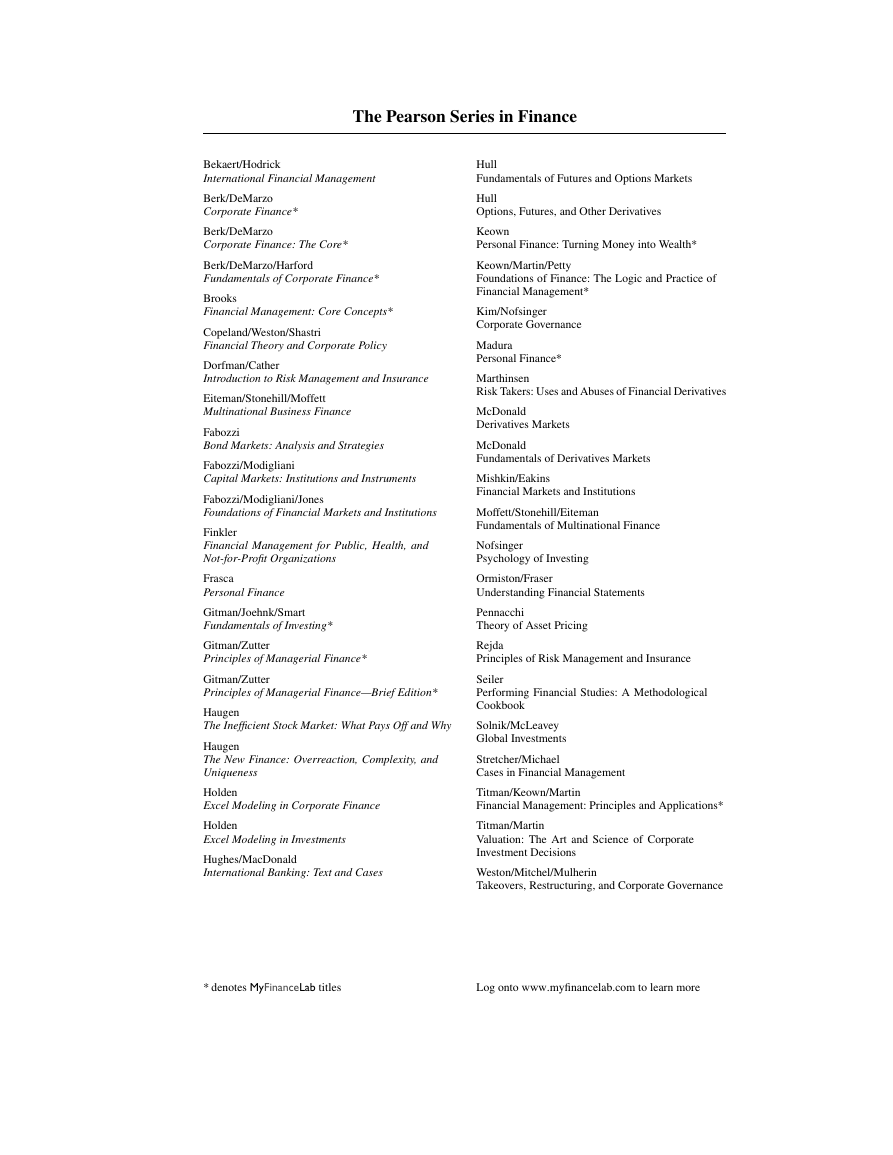
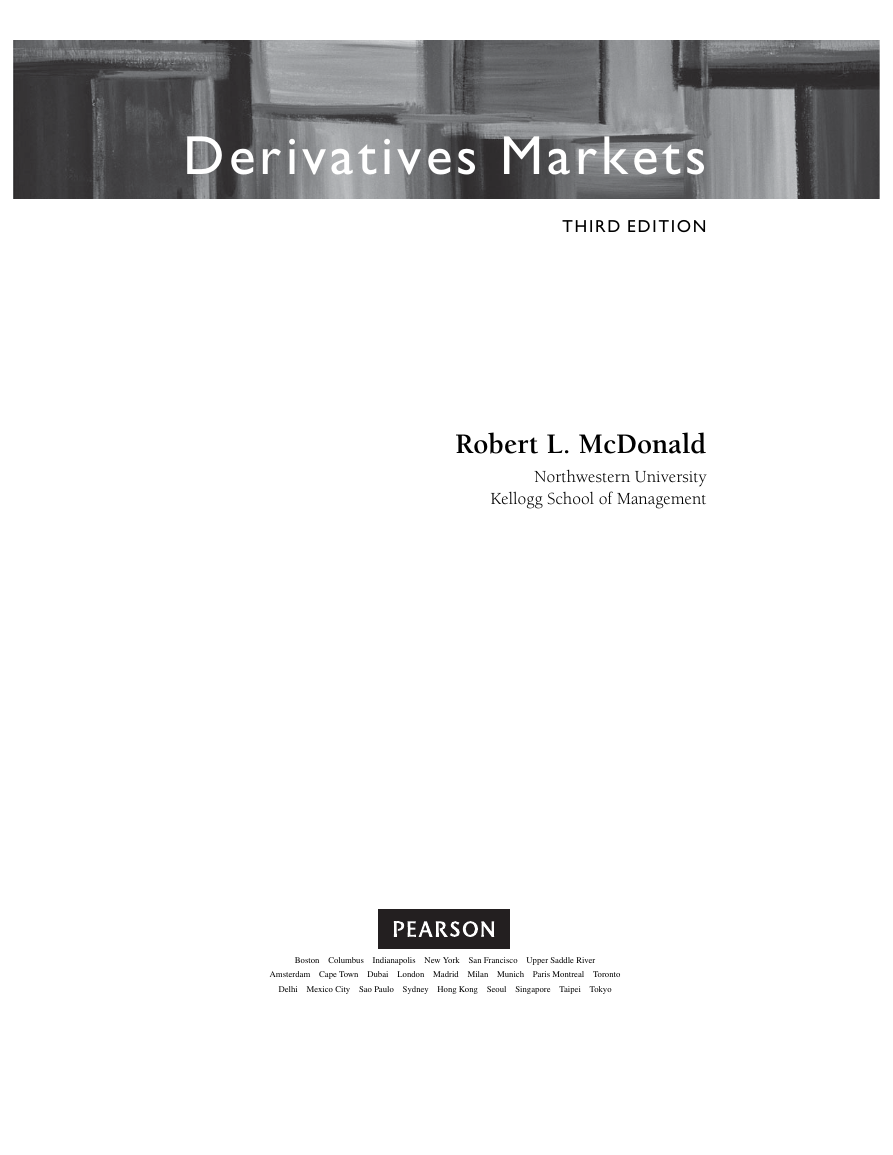
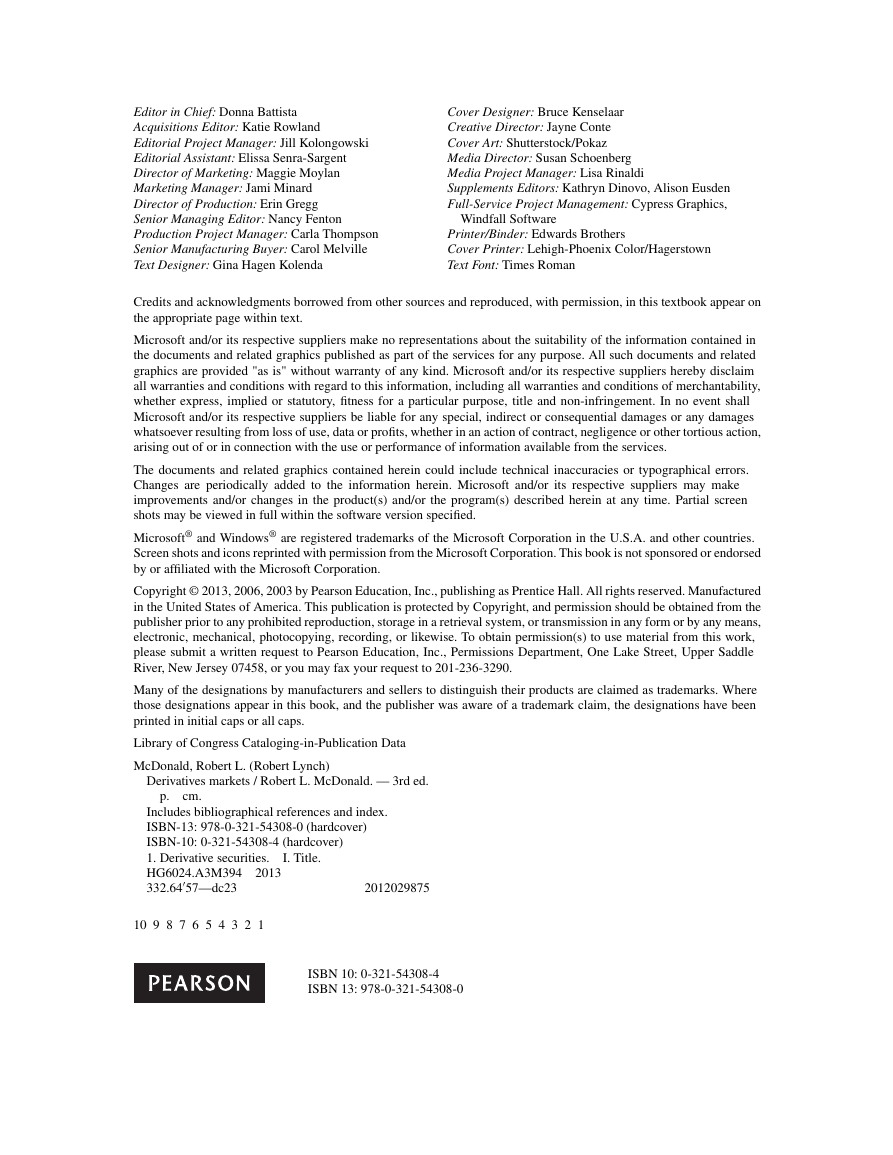


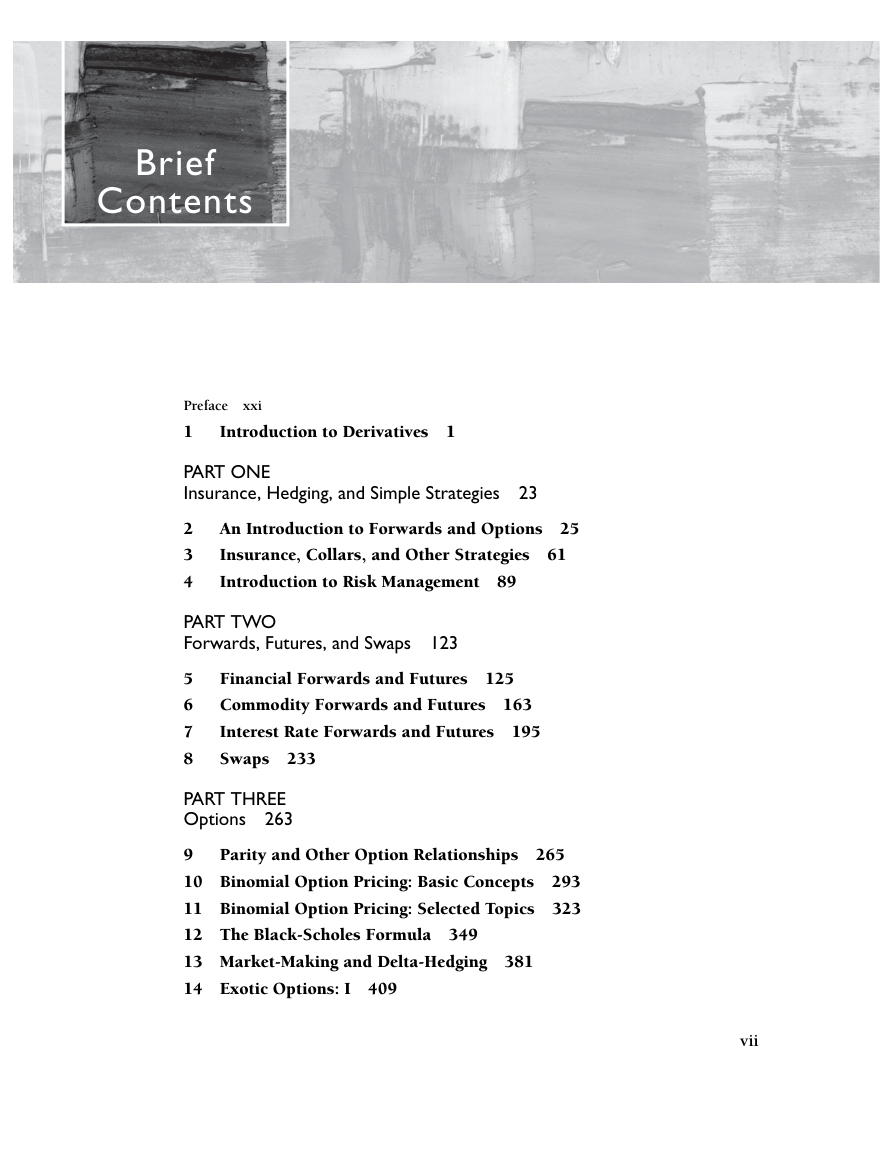








 2023年江西萍乡中考道德与法治真题及答案.doc
2023年江西萍乡中考道德与法治真题及答案.doc 2012年重庆南川中考生物真题及答案.doc
2012年重庆南川中考生物真题及答案.doc 2013年江西师范大学地理学综合及文艺理论基础考研真题.doc
2013年江西师范大学地理学综合及文艺理论基础考研真题.doc 2020年四川甘孜小升初语文真题及答案I卷.doc
2020年四川甘孜小升初语文真题及答案I卷.doc 2020年注册岩土工程师专业基础考试真题及答案.doc
2020年注册岩土工程师专业基础考试真题及答案.doc 2023-2024学年福建省厦门市九年级上学期数学月考试题及答案.doc
2023-2024学年福建省厦门市九年级上学期数学月考试题及答案.doc 2021-2022学年辽宁省沈阳市大东区九年级上学期语文期末试题及答案.doc
2021-2022学年辽宁省沈阳市大东区九年级上学期语文期末试题及答案.doc 2022-2023学年北京东城区初三第一学期物理期末试卷及答案.doc
2022-2023学年北京东城区初三第一学期物理期末试卷及答案.doc 2018上半年江西教师资格初中地理学科知识与教学能力真题及答案.doc
2018上半年江西教师资格初中地理学科知识与教学能力真题及答案.doc 2012年河北国家公务员申论考试真题及答案-省级.doc
2012年河北国家公务员申论考试真题及答案-省级.doc 2020-2021学年江苏省扬州市江都区邵樊片九年级上学期数学第一次质量检测试题及答案.doc
2020-2021学年江苏省扬州市江都区邵樊片九年级上学期数学第一次质量检测试题及答案.doc 2022下半年黑龙江教师资格证中学综合素质真题及答案.doc
2022下半年黑龙江教师资格证中学综合素质真题及答案.doc